GE Profile 22.1 cu. ft. French Door Refrigerator with Autofill in Fingerprint Resistant Stainless Steel, Counter Depth
Counter depth design creates a sleek built-in look. Hands-free Autofill automatically fills any container. Resists fingerprints and smudges for a clean sleek appearance.
GE Profile products offer the best in contemporary design matched with the latest in appliance technologies to transform the way you live. Sporting a bold, dramatic look and state of the art features, this collection provides the perfect combination of style and innovation throughout your kitchen.
- Fingerprint resistant stainless – Easily wipe away smudges and fingerprints for a look that’s always sparkling clean
- Counter-depth design – Offers a built-in look by fitting nearly flush with surrounding cabinetry
- Hands-free Autofill – Lets you walk away while the dispenser automatically fills any container with filtered water
- Full-width, electronic temperature-controlled drawer with LED lights – 3 accurate settings deliver the optimal temperature for your favorite foods
- Second icemaker option – Always have extra ice on hand with an optional second icemaker in the freezer (IM5D kit sold separately)
- TwinChill evaporators – Separate climates in the fresh food and freezer sections help keep foods fresh
- Showcase LED lighting – Positioned throughout the interior and under fresh food doors to spotlight foods inside the refrigerator and in the freezer
- Quick Space shelf – Quickly slides out of the way to make room for tall items
- Drop-down tray – Allows for extra door storage when you need it and tucks away when you don’t
- Turbo Cool setting – Drops interior temperature to maintain freshness after frequent openings
- Approximate Dimensions (in.) – 69-7/8 in. H x 35-3/4 in. W x 31-1/4 in. D
- Limited 1-year entire appliance warranty
-
Additional information
| Depth (Excluding Handles) | 29.75 |
|---|---|
| Depth (Including Handles) | 31.25 |
| Depth (Less Door) | 24.38 |
| Depth With Door Open 90 Degrees (In) | 43.38 |
| Height to Top of Door Hinge (in.) | 69.88 |
| Height to Top of Refrigerator (in.) | 69 |
| Product Depth x Height x Width (in.) | 31.25 x 69.88 x 35.75 |
| Refrigerator Width (In.) | 35.75 |
| Certifications and Listings | ADA Compliant,Energy Star,UL Listed |
| Manufacturer Warranty | Limited 1-year entire appliance |

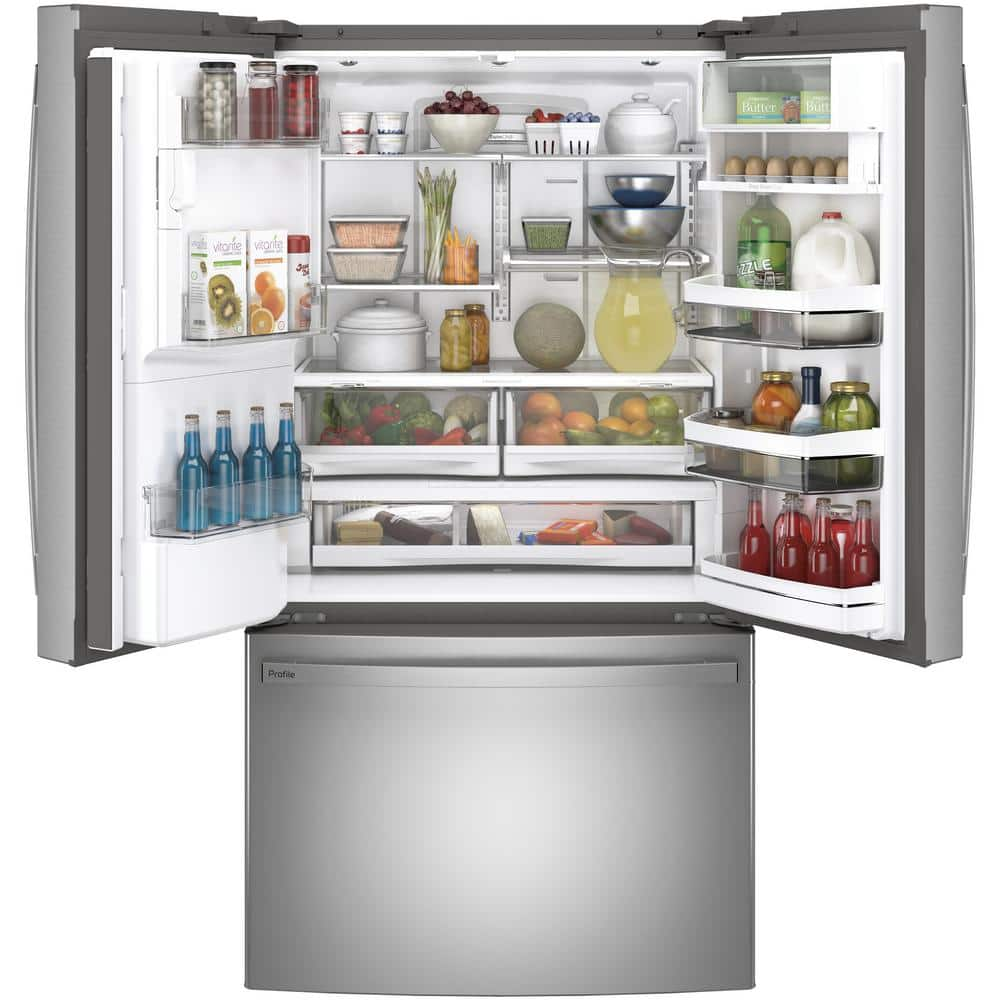
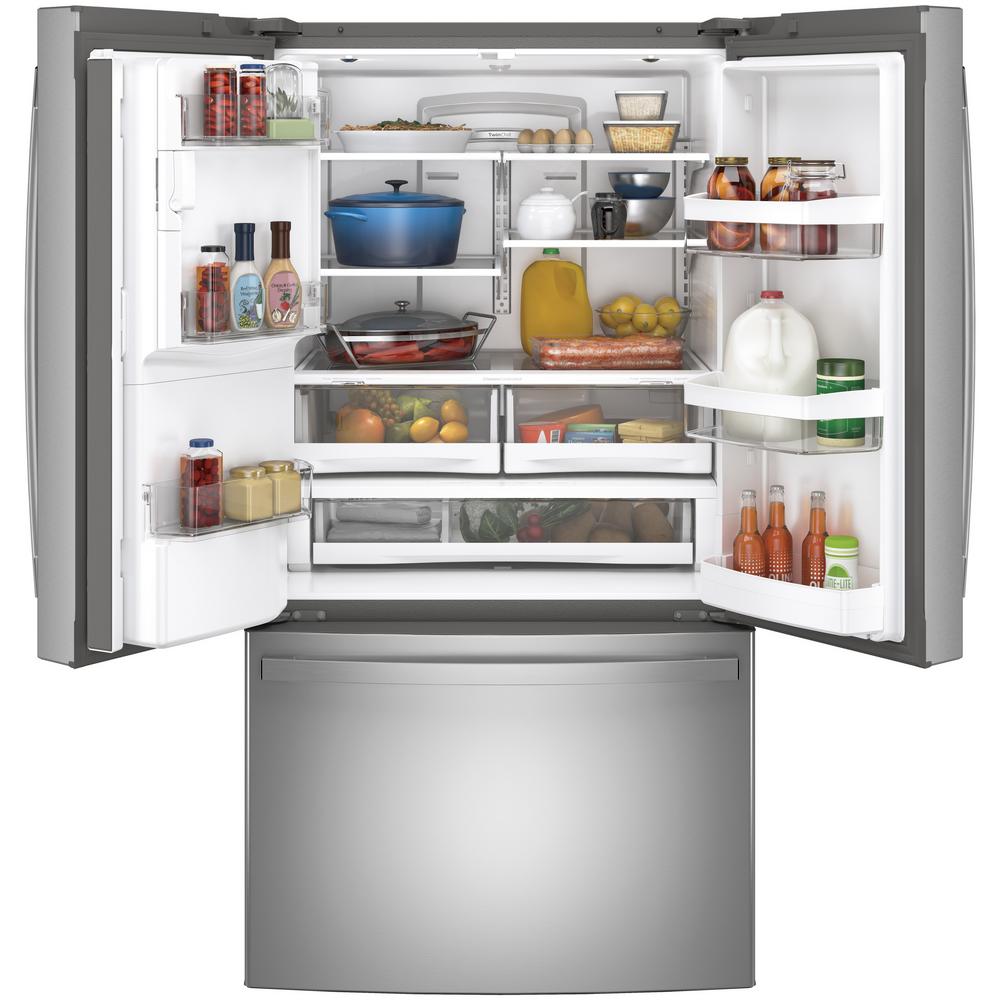
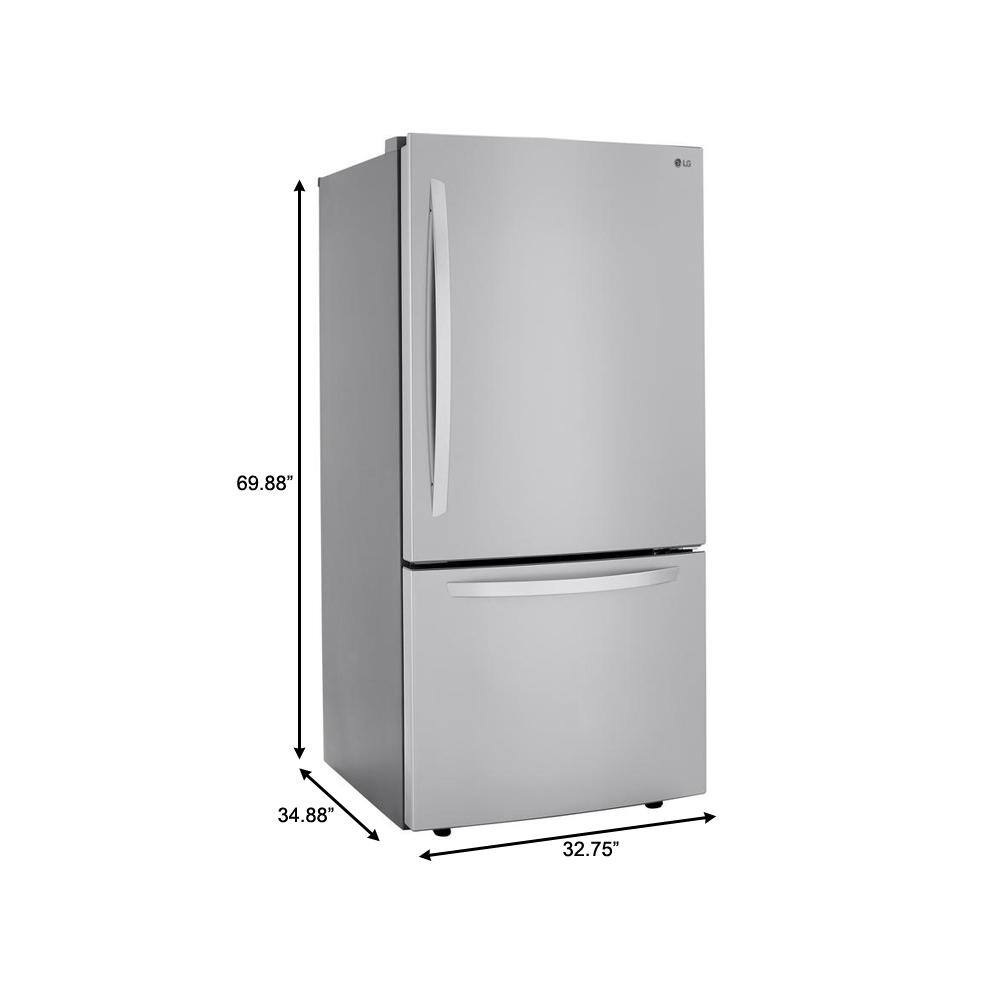
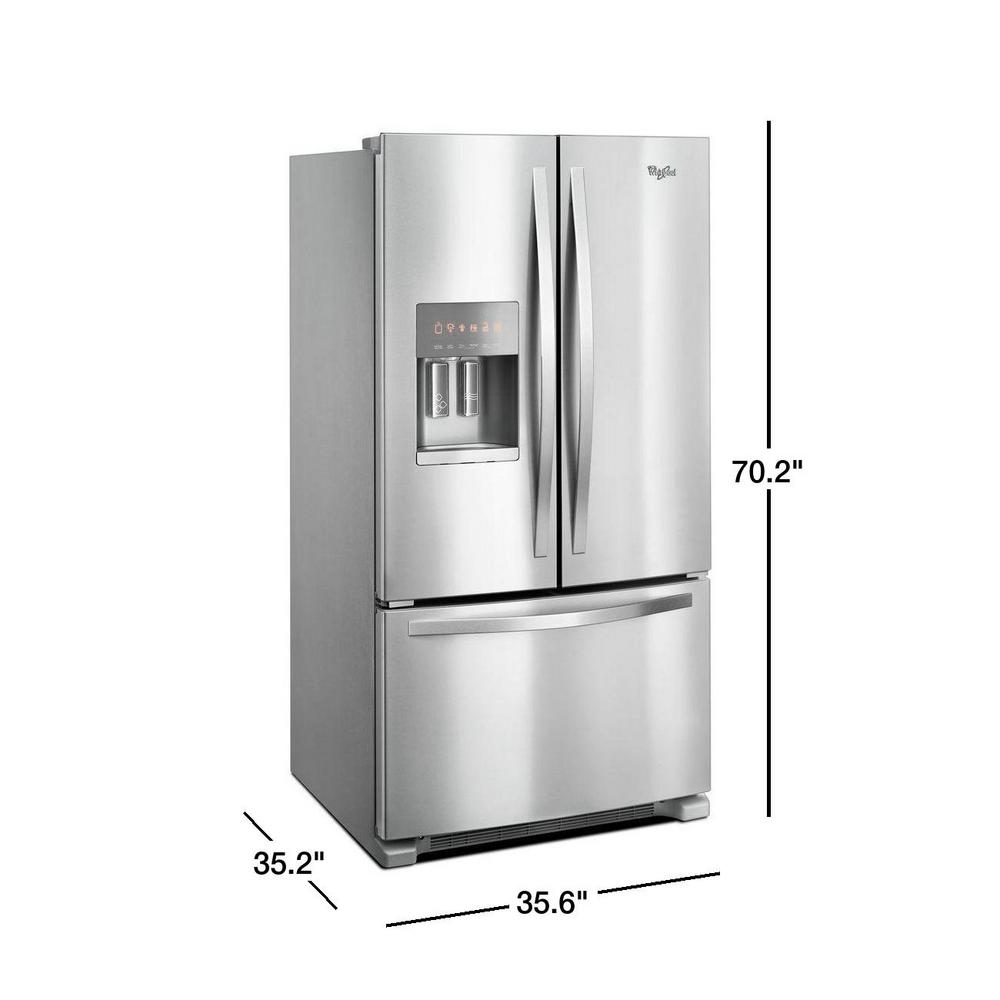
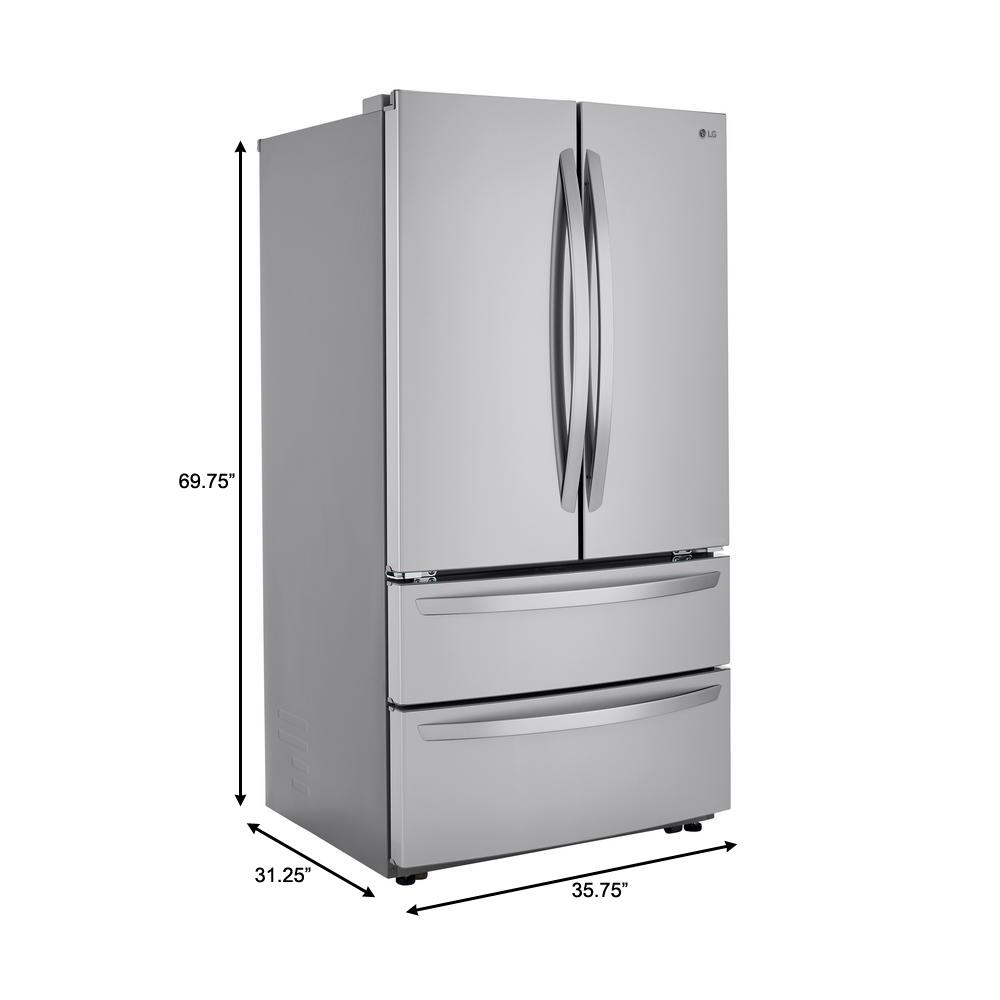
by Mike
We had a 24.5 cu ft side by side counter depth fridge that was about to give up the ghost. We didn’t want to scale down in size but no such beast now exists in counter depth.The GE Profile French door was our best option. While this fridge is smaller @ 22.1 cu ft it holds much more. Wasn’t sure I would like a drawer freezer but now I am a convert. Holds much more and it is easier to see what you have on hand. Only drawback is the door ice maker is quite small. It holds enough for daily use (125 cubes) but if you need to fill a cooler on a regular basis I would suggest purchasing the optional ice maker for the freezer drawer.
by Mindy
This refrigerator styling accented our kitchen with great flare. Runs so quietly and has great features.GE did a great job styling this fridge with the customer in mind.
by Janese
We love our GE Profile French Door Refrigerator. It is sleek and beautiful. It is so roomy and includes so many awesome features. Love it!!
by Audi
We purchased the GE stainless steel, counter depth french door refrigerator for our newly renovated office. We have water and ice in the door and additional ice maker in the bottom freezer. This refrigerator looks nice in our new break area and runs quietly. There is plenty of room for employee lunches or for items for catered events. The extra ice maker will come in handy when we have special events.
by Veteran
Only had this Fridge for 2 days but my family really appreciates the lower but taller water fill with Autofill sensor. They can fill their reusable water bottles with one touch, and when I want to fill my coffee pot, I pull out the tray so it won’t tip over. My last fridge had a recurring issue with the icemaker but this one has its icemaker in the door, which frees up shelf space, and the cubes are noticing clearer. The condiment shelves on the right door are designed well. The lighting brightens gradually, which will help at night, and the fit and finish is outstanding. One tip, the first delivery brought us a unit with a large dent on the left door. I have seen that from other reviews. I think it may be poor cardboard+Styrofoam packaging design. The left door stainless steel also has “waves” and a tiny indentation.
by Nish
I just received my fridge yesterday and I love it so much it just fits so perfectly in my kitchen and completes my whole black slate collected.
by Nelson
This refrigerator is a quality product that meets all our needs.
by Adele
This is a beautiful refrigerator and very roomy. I love the black stainless steel.
by Anne
Great storage in refrigerator and freezer. you won’t be disappointed. it fits perfectly in the kitchen.
by Claire
Lots of space! Looks beautiful and shines! Kids love the automatic water dispenser. Easy to clean!